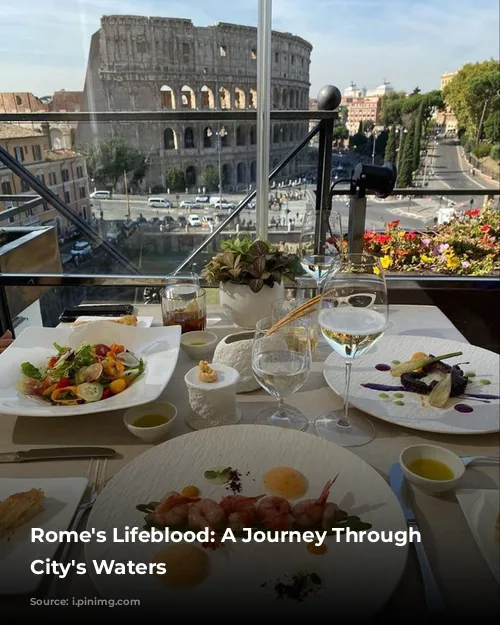Rome, the Eternal City, owes its very existence to its water. It’s not just one source, but a network of springs that generously supply hectolitres of pure water daily. This ancient Roman legacy continues to shape the city’s character, providing a unique experience for both locals and visitors.
The Gift of Free Water
Rome’s generous spirit extends to its water. Drink freely from the many fountains scattered throughout the city, without fear or cost. This precious resource, accessible to all, is a testament to the engineering brilliance of the ancient Romans. Their 2,000-year-old water network, a marvel of underground conduits, continues to deliver water to the city, a remarkable feat of sustainable design.
Ancient Engineering: A Legacy of Prosperity
The Romans were masters of engineering, capable of transporting water over vast distances. Aerial aqueducts, remnants of their ingenious system, still stand as silent witnesses to this remarkable past. The arches and slopes of these structures, built with mathematical precision, ensured a steady flow of pristine water to the city. This innovative approach to water management played a key role in Rome’s sanitary prosperity, making it one of the healthiest cities of its time.
A Thirst for Quality: Rome’s Tap Water
Rome’s tap water is a gift, a delicious and refreshing treat that flows freely from thousands of drinking fountains. Feel free to refill your bottles at these nasoni, or “big noses,” as they are fondly called. The water, rich in minerals, is considered hard water, meaning it contains high levels of calcium, which can be both a blessing and a curse. While it provides essential minerals for health, it can also lead to scaling in appliances.
The Nasoni: A Symbol of Abundance and Waste
The nasoni, with their distinctive protruding noses, are a familiar sight across Rome. These 2,000 fountains continuously pour out water, much of which flows into the sewer system, ending up in the sea. While this may seem wasteful in a world facing water scarcity, there’s a surprising reason behind this seemingly extravagant practice. Some believe that closing the fountains could damage the pipes due to high water pressure. The truth remains shrouded in mystery, leaving citizens to grapple with high water bills while facing a constant abundance of water.
Tap Water at the Table: A European Tradition
Tap water in Rome, much like many other aspects of the city, has earned a nickname: “the mayor’s water.” You can playfully request this at bars and restaurants, though some establishments might offer it automatically, influenced by the southern tradition of serving water before coffee. However, if you desire bottled water, be sure to specify your preference. Some restaurants may offer microfiltered tap water, a purified version with the option of adding effervescence.
The Fizz of Natural Springs: A Taste of Rome
For those who appreciate the sparkle of natural effervescence, Rome offers a unique experience. Naturally bubbly spring water, prized for its flavor and digestive benefits, is a sought-after treat. One such spring, Capannelle, located on the Appian Way, attracts a steady stream of locals eager to fill their bottles with this exceptional water.
The European law governing restaurants might seem puzzling to those familiar with Rome’s abundance of tap water. This law, designed to ensure water safety across the continent, requires restaurants to serve either bottled or microfiltered water, even when requested for tap water.
Fountains of Beauty: A City of Water and Art
Rome’s water fountains are more than just sources of refreshment; they are artistic masterpieces, woven into the fabric of the city. Stunning sculptures, from Bernini’s Fontana dei Quattro Fiumi to the Barcaccia in Piazza di Spagna, transform these fountains into architectural marvels.
These fountains tell stories, evoking the mythological tales and historical grandeur of Rome. From the naïads of Piazza della Repubblica to the lions of Piazza del Popolo, these water features add a layer of magic to the city’s streetscapes. Each fountain, with its own unique history and artistic merit, offers a glimpse into the soul of Rome, a city where art and water intertwine in a symphony of beauty and life.
